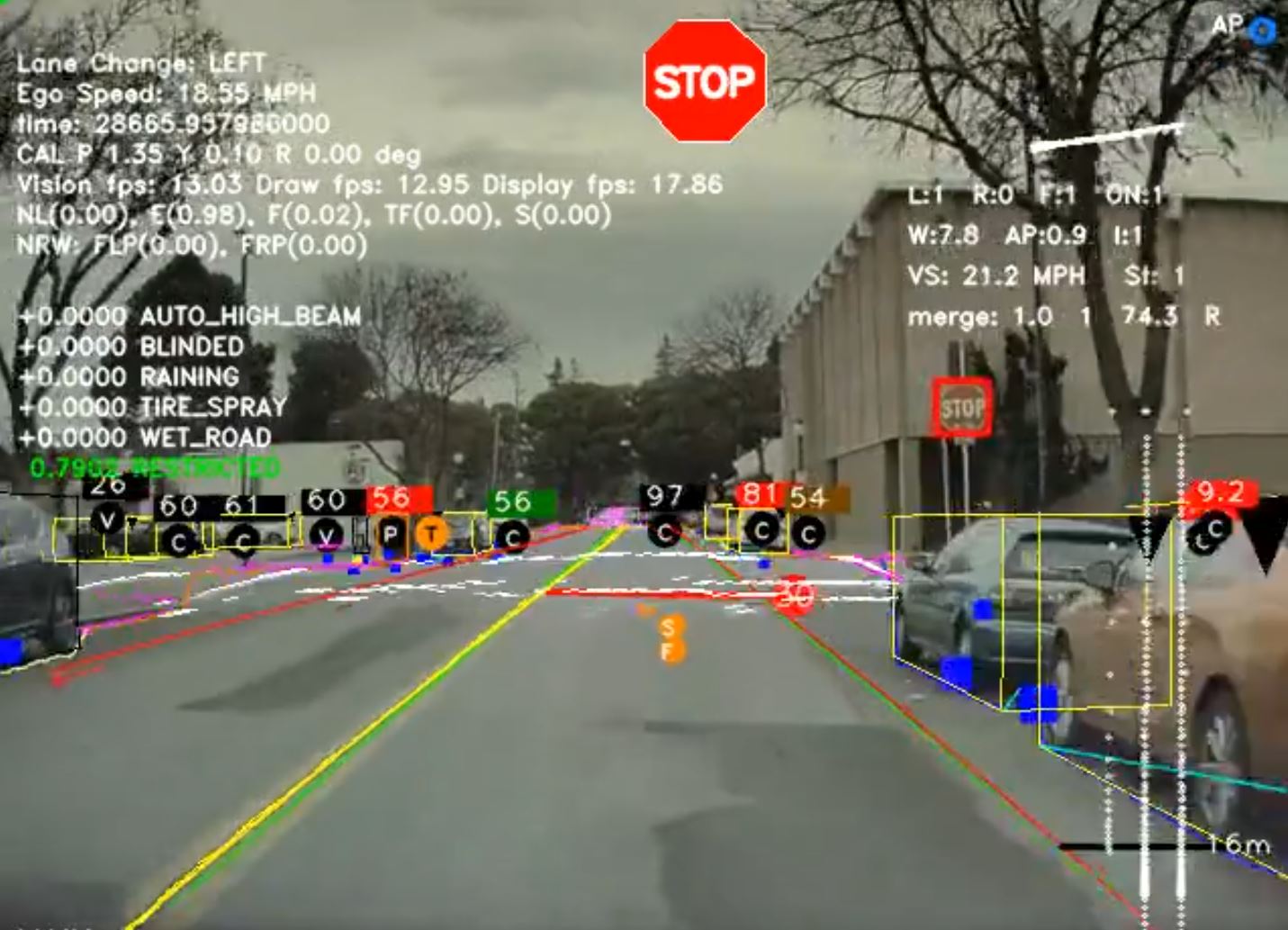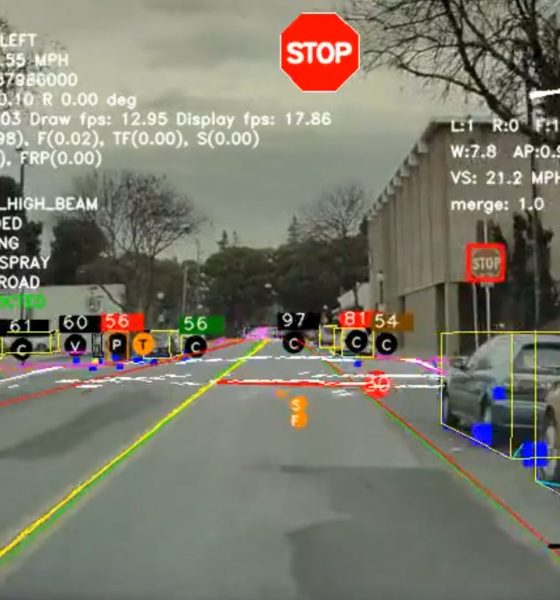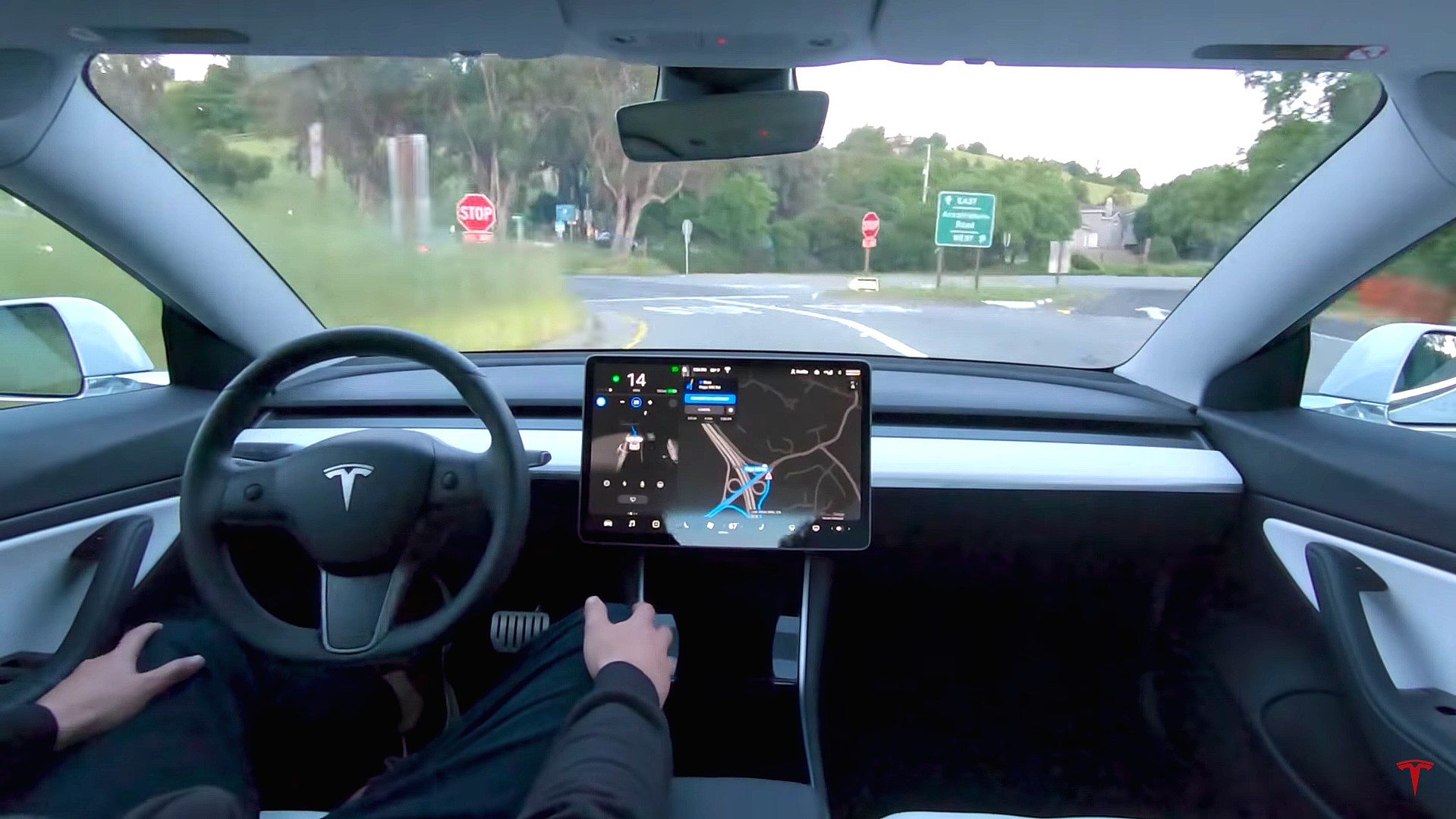

News
Tesla’s FSD suite is impressive, but Aurora CEO says, ‘We were doing better in 2010’
Tesla’s Full Self-Driving suite is one of the most robust on the market. The semi-autonomous driving functionality has caught the eye of nearly everyone who has read about the all-electric vehicle manufacturer in the past few years. With many competitors on the market today, there will always be a few skeptics, and Aurora CEO Chris Urmson is one of them.
Urmson is an autonomous vehicle veteran who is known for his work in self-driving cars. He co-founded Aurora in 2017 to develop self-driving technology and has been involved with projects related to autonomy for over 15 years. Urmson also was the head of Google’s self-driving project for almost eight years before leaving in 2016, but his work required him to build the code that powered Google’s autonomous software.
An autonomous Tesla Model 3 in action. (Credit: Tesla)
It is no secret that Urmson knows a thing or two about autonomy considering his experience in the field. However, he remains highly skeptical of Tesla’s Full Self-Driving suite, stating that his work in 2010 is equally as impressive and robust as the performance of FSD. Most notably, Elon Musk’s comments regarding Tesla’s Robotaxi program that would allow owners to monetize their vehicles without driving them personally have Urmson especially skeptical.
Musk planned to have 1 million Robotaxis on the road by the end of 2021. Whether this happens ultimately depends on regulators and Tesla’s ability to improve its FSD suite to Level 5 autonomy that wouldn’t require a driver to pay any attention to the road. Musk has stated in the past that he plans to have reached Level 5 autonomy by the end of this year. “I think we could see robotaxis in operation with network fleet next year. Not in all markets, but in some,” Musk said during the Q1 2020 Earnings Call in April 2020.
Urmson is not totally on board with Musk’s predictions and stated that he doesn’t see it happening anytime soon.
In an interview regarding competing self-driving companies and Tesla’s Robotaxi fleet, he said (via Bloomberg):
“It’s just not going to happen. It’s technically very impressive what they’ve done, but we were doing better in 2010.”
It is no secret that Tesla has been lofty with its predictions of where it will be in terms of the FSD Suite’s rollout. With over 23 billion miles of real-world data, Tesla’s self-driving program is fueled by data collected by its external cameras, which is then transferred to a Neural Network that learns human behavior. This improves the performance of the suite with every mile driven.
Urmson’s comments will undoubtedly raise criticism from Tesla fans, especially those who are included in the company’s Beta rollout of the FSD suite. Tesla and Urmson do have some history. In 2017, Tesla listed Urmson and former Autopilot director Sterling Anderson for poaching employees for a competing venture. The lawsuit was settled by Aurora, who paid $100,000 to Tesla as part of a settlement.

News
Tesla FSD fleet is nearing 7 billion total miles, including 2.5 billion city miles
As can be seen on Tesla’s official FSD webpage, vehicles equipped with the system have now navigated over 6.99 billion miles.

Tesla’s Full Self-Driving (Supervised) fleet is closing in on almost 7 billion total miles driven, as per data posted by the company on its official FSD webpage.
These figures hint at the massive scale of data fueling Tesla’s rapid FSD improvements, which have been quite notable as of late.
FSD mileage milestones
As can be seen on Tesla’s official FSD webpage, vehicles equipped with the system have now navigated over 6.99 billion miles. Tesla owner and avid FSD tester Whole Mars Catalog also shared a screenshot indicating that from the nearly 7 billion miles traveled by the FSD fleet, more than 2.5 billion miles were driven inside cities.
City miles are particularly valuable for complex urban scenarios like unprotected turns, pedestrian interactions, and traffic lights. This is also the difference-maker for FSD, as only complex solutions, such as Waymo’s self-driving taxis, operate similarly on inner-city streets. And even then, incidents such as the San Francisco blackouts have proven challenging for sensor-rich vehicles like Waymos.
Tesla’s data edge
Tesla has a number of advantages in the autonomous vehicle sector, one of which is the size of its fleet and the number of vehicles training FSD on real-world roads. Tesla’s nearly 7 billion FSD miles then allow the company to roll out updates that make its vehicles behave like they are being driven by experienced drivers, even if they are operating on their own.
So notable are Tesla’s improvements to FSD that NVIDIA Director of Robotics Jim Fan, after experiencing FSD v14, noted that the system is the first AI that passes what he described as a “Physical Turing Test.”
“Despite knowing exactly how robot learning works, I still find it magical watching the steering wheel turn by itself. First it feels surreal, next it becomes routine. Then, like the smartphone, taking it away actively hurts. This is how humanity gets rewired and glued to god-like technologies,” Fan wrote in a post on X.
News
Tesla starts showing how FSD will change lives in Europe
Local officials tested the system on narrow country roads and were impressed by FSD’s smooth, human-like driving, with some calling the service a game-changer for everyday life in areas that are far from urban centers.

Tesla has launched Europe’s first public shuttle service using Full Self-Driving (Supervised) in the rural Eifelkreis Bitburg-Prüm region of Germany, demonstrating how the technology can restore independence and mobility for people who struggle with limited transport options.
Local officials tested the system on narrow country roads and were impressed by FSD’s smooth, human-like driving, with some calling the service a game-changer for everyday life in areas that are far from urban centers.
Officials see real impact on rural residents
Arzfeld Mayor Johannes Kuhl and District Administrator Andreas Kruppert personally tested the Tesla shuttle service. This allowed them to see just how well FSD navigated winding lanes and rural roads confidently. Kruppert said, “Autonomous driving sounds like science fiction to many, but we simply see here that it works totally well in rural regions too.” Kuhl, for his part, also noted that FSD “feels like a very experienced driver.”
The pilot complements the area’s “Citizen Bus” program, which provides on-demand rides for elderly residents who can no longer drive themselves. Tesla Europe shared a video of a demonstration of the service, highlighting how FSD gives people their freedom back, even in places where public transport is not as prevalent.
What the Ministry for Economic Affairs and Transport says
Rhineland-Palatinate’s Minister Daniela Schmitt supported the project, praising the collaboration that made this “first of its kind in Europe” possible. As per the ministry, the rural rollout for the service shows FSD’s potential beyond major cities, and it delivers tangible benefits like grocery runs, doctor visits, and social connections for isolated residents.
“Reliable and flexible mobility is especially vital in rural areas. With the launch of a shuttle service using self-driving vehicles (FSD supervised) by Tesla in the Eifelkreis Bitburg-Prüm, an innovative pilot project is now getting underway that complements local community bus services. It is the first project of its kind in Europe.
“The result is a real gain for rural mobility: greater accessibility, more flexibility and tangible benefits for everyday life. A strong signal for innovation, cooperation and future-oriented mobility beyond urban centers,” the ministry wrote in a LinkedIn post.
News
Tesla China quietly posts Robotaxi-related job listing
Tesla China is currently seeking a Low Voltage Electrical Engineer to work on circuit board design for the company’s autonomous vehicles.

Tesla has posted a new job listing in Shanghai explicitly tied to its Robotaxi program, fueling speculation that the company is preparing to launch its dedicated autonomous ride-hailing service in China.
As noted in the listing, Tesla China is currently seeking a Low Voltage Electrical Engineer to work on circuit board design for the company’s autonomous vehicles.
Robotaxi-specific role
The listing, which was shared on social media platform X by industry watcher @tslaming, suggested that Tesla China is looking to fill the role urgently. The job listing itself specifically mentions that the person hired for the role will be working on the Low Voltage Hardware team, which would design the circuit boards that would serve as the nervous system of the Robotaxi.
Key tasks for the role, as indicated in the job listing, include collaboration with PCB layout, firmware, mechanical, program management, and validation teams, among other responsibilities. The role is based in Shanghai.
China Robotaxi launch
China represents a massive potential market for robotaxis, with its dense urban centers and supportive policies in select cities. Tesla has limited permission to roll out FSD in the country, though despite this, its vehicles have been hailed as among the best in the market when it comes to autonomous features. So far, at least, it appears that China supports Tesla’s FSD and Robotaxi rollout.
This was hinted at in November, when Tesla brought the Cybercab to the 8th China International Import Expo (CIIE) in Shanghai, marking the first time that the autonomous two-seater was brought to the Asia-Pacific region. The vehicle, despite not having a release date in China, received a significant amount of interest among the event’s attendees.








